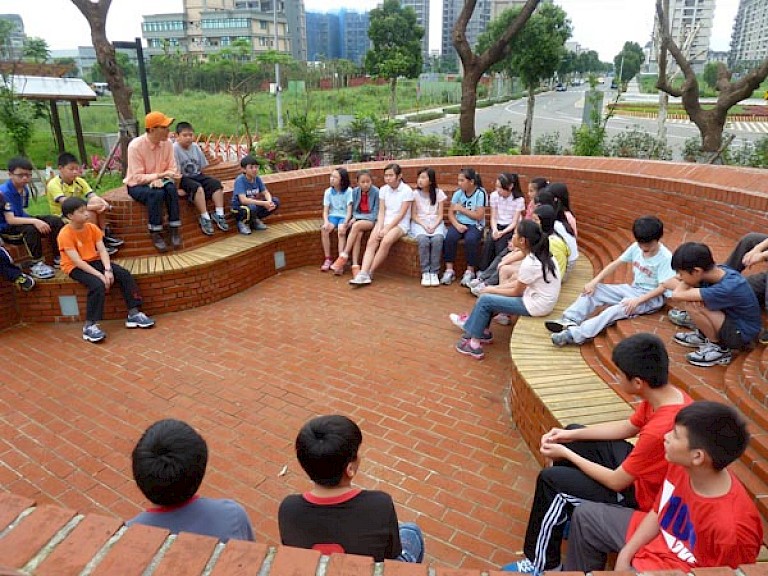



The Touhu Red Fortress is a public art project created at Lake Elementary School in the Linkou District of New Taipei City.
The Linkou Tableland is composed of barren clay, unsuitable for farming. Pioneers to this area adjusted to the local conditions by planting tea trees and using the red soil to form bricks used in the construction of buildings.
Echoing the history of the land, the Touhu Red Fortress incorporates red bricks in a sculpted terrain, creating a "new land paradise" on the campus, a space where students and teachers can interact, rest, and play. Carved bricks, called "my treasures," were created by the students and their parents and worked into the wall. Each of these bricks tells a story of families who have lived in the area for several generations. A 50-year-old tea tree grows beside this curved and hilly plaza, providing a connection between past and future, a reminder of the stories of past years.
To promote the development of public art in Taiwan, in addition to the help of several important nonprofit organizations, some civil associations assist in the public sector; some of these focus on promoting related education plans, while others mostly hold some exhibition activities. The two groups—nonprofits and civil associations—will have many common points as well as their own respective development directions. Working together, they provide necessary information and education of service.
All copyright belongs to Shanghai Academy of Fine Arts, Shanghai University.

